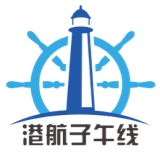Decoding Cebu Port, the Second-Largest Port in the Philippines 解码菲律宾第二大港:宿务
Decoding Cebu Port, the Second-Largest Port in the Philippines
解码菲律宾第二大港:宿务
In previous issues, we introduced the largest port in the Philippines, Manila Port, as well as Batangas Port, which serves as a feeder port for Manila Port. In addition, there is a port located on the eastern coast of Cebu Island in the central Philippines. Established in 1860, this port, according to publicly available information, has modern facilities capable of handling 80% of the country's maritime transport. It has become the center for business, finance, and education in southern Philippines due to the gradual prosperity of industry and commerce. Today, we will take an in-depth look at this second-largest port in the Philippines—Cebu Port.
关于菲律宾的港口,往期我们介绍了最大的港口马尼拉港以及作为马尼拉港集散港的八打雁港;除此之外,有一个港口位于菲律宾中部宿务岛东部沿海地区,始建于1860年,根据公开资料表明,其现代化的港口设施可容纳菲律宾80%的海运业务,是菲律宾第二大港,因工商业的逐步繁荣成为菲律宾南部商业、金融及教育的中心。今天我们就深入了解一下这个菲律宾第二港口,它就是宿务港。
I. Cebu Port's Economic Hub Status
Cebu Port is an important maritime port in the Philippines and one of the main ports on the Southeast Asia shipping route. Cebu, established as a city in 1571, is the oldest city in the Philippines and also an emerging commercial and tourist city.
Cebu is the second-largest city in the Philippines, only after Manila. Located on the east coast of Cebu Island in the central Philippines, it is not only the political, economic, and cultural center of Cebu Province but also the second-largest city and important seaport in the Philippines, second only to the capital, Manila. The city covers an area of 340 square kilometers and has a population of 960,000, making it the second-largest city in the Philippines, known as the "Queen City of the South." Metro Cebu, comprising Cebu City, Mandaue City, and Lapu-Lapu City, has a population of about 1.9 million and serves as the economic center of the Central Visayas region.
宿务港的经济枢纽地位
宿务港是菲律宾重要的海运港口,东南亚线航线主要港口之一, 宿务于1571年建市,是菲律宾最古老的城市,同时又是一个新兴的商业旅游城市。
宿务是菲律宾第二大城市,仅次于马尼拉。位于菲律宾群岛中部的宿务岛东岸。它不仅是菲律宾宿务省的政治、经济和文化中心,也是仅次于菲律宾首都马尼拉的第二大城市和重要海港。这座城市面积340平方公里,人口96万,是菲第二大城市,素有“菲南皇后城”之称。宿务市、曼达威市和拉普拉普市组成大宿务,人口约190万,是苏维亚地区的经济中心。
(1) Geographic Location and Regional Linkages
Cebu Port is located in the center of the Visayas Islands, facing the Bohol Strait, and is the core of central Philippines. It is 175 nautical miles north of Iloilo Port, 311 nautical miles from Batangas Port, 392 nautical miles from Manila Port, 962 nautical miles to Hong Kong, and 252 nautical miles south of Zamboanga Port.
Cebu Port is a natural transshipment hub connecting northern Philippines (Luzon Island), southern Philippines (Mindanao Island), and other Southeast Asian countries. It is located on the shipping route from the South China Sea to the Pacific and Indian Oceans, serving as a collection and distribution port on the trans-Pacific routes (e.g., East Asia–North America) and regional routes (e.g., Southeast Asia–East Asia). It is also the intersection of the South China Sea trade route and the domestic north-south shipping channel of the Philippines, forming a north-south distribution system for dry and bulk cargo with Batangas Port and Zamboanga Port. It is an important economic and logistics hub on Cebu Island, connecting Luzon Island, Mindanao Island, and the Visayas Islands. Its coverage extends south to Mindanao Island and other parts of Southeast Asia and north to the economic centers of Luzon Island, such as Manila and Batangas, handling the transshipment and distribution of bulk commodities such as minerals and agricultural products.
(一)地理位置与区域联动
宿务港位于维萨亚斯群岛中心,临保和海峡,是菲律宾的中部核心。北踞怡朗港175海里,距八打雁港311海里,距马尼拉港392海里,至香港962海里,南至三宝颜港252海里。
宿务港是连接菲律宾北部(吕宋岛)、南部(棉兰老岛)及东南亚其他国家的天然中转站。它位于中国南海通往太平洋、印度洋的航线上,是跨太平洋航线上(如东亚—北美)和区域内航线上(如东南亚—东亚)的集散港。同时也是南海贸易航线与菲律宾国内南北航运通道的交汇点,与八打雁港、三宝颜港共同构成菲律宾干散货南北分拨体系,是宿务岛的重要经济和物流枢纽,也是连接吕宋岛、棉兰老岛及米沙鄢群岛的重要枢纽。其覆盖范围向南延伸至棉兰老岛及东南亚其他地区,向北对接吕宋岛经济中心如马尼拉、八打雁,承担大宗商品如矿产、农产品的中转与集散功能。
Unlike Manila Port, which is the main hub port of the Philippines handling approximately 70% of the country's container throughput and primarily serves as the starting or endpoint of shipping routes, Cebu Port focuses on regional transshipment, serving the central and southern Philippines and Southeast Asian routes as a supplementary node on the main shipping routes. Cebu Port can provide mid-voyage services for container and bulk cargo ships, including refueling, fresh water, and food supplies. It also has temperature-controlled cold storage facilities serving the import and export trade of perishable goods such as seafood and tropical fruits. As a supplementary node, Cebu Port differs from nearby ports such as Davao Port and Iloilo Port. Davao Port mainly serves Mindanao Island, while Iloilo Port focuses on Western Visayas. With more comprehensive facilities and a broader hinterland, Cebu Port has become the preferred calling port in the central region.
与马尼拉港不同的是,马尼拉港是菲律宾的主枢纽港,承担全国约70%的集装箱吞吐量,更多作为航线的起点或终点。而宿务港则侧重区域中转,服务于菲律宾中南部及东南亚航线,是主航线上的补充节点。宿务港能为集装箱船、散货船在长途航行中需要中途停靠补充燃料、淡水和食物,并且设有温控冷库,服务于水产品、热带水果等易腐货物的进出口贸易。而作为补充节点,宿务港与相近的达沃港、伊洛伊洛港又有所不同,达沃港主要服务棉兰老岛,伊洛伊洛港聚焦西维萨亚斯,宿务港凭借更完善的设施和更广的腹地,成为中部地区的首选挂靠港。
International shipping companies use Cebu Port as a hub port on the main shipping routes, distributing goods to other islands in the Philippines (such as Leyte Island and Samar Island) or smaller ports in Southeast Asia through feeder vessels, creating a "hub-and-feeder" model. Cebu Port consolidates agricultural and industrial products from surrounding islands and transports them to global markets via large vessels, reducing overall transportation costs. For example, a large amount of goods from the central Philippines (such as sugar from Negros Island and minerals from Bohol Island) and neighboring Southeast Asian countries are processed in Cebu Port, which then serves as a transshipment point to other ports or international markets.
国际航运公司将宿务港作为主航线上的母港,通过支线船将货物分拨至菲律宾其他岛屿(如莱特岛、萨马岛)或东南亚小港口,形成“母港—支线”模式。宿务港将周边岛屿的农产品、工业品集中后,通过大型船舶转运至全球市场,降低整体运输成本。例如大量来自菲律宾中部(如内格罗斯岛的糖、保和岛的矿产)和东南亚邻国的货物会选择在宿务港处理,这些货物在此中转至其他港口或国际市场。
(2) Port Service Characteristics
Cebu Port is a collection and distribution center for abaca, copra, mangoes, tobacco, and timber. Its main industries include sugar refining, cigarette manufacturing, ceramics, beer production, and coconut processing. It is home to the largest coconut oil factory in the Philippines and a world-famous coconut shell activated carbon factory. It is also one of the country's major copper mining areas, with coal, gold, and petroleum production. Public data indicates that the Philippines is one of the top five seaweed-producing countries globally, with a total value of processed seaweed products reaching approximately 12.7 billion pesos in 2023. Mindanao Island is the core farming area, while the Visayas region serves as the processing and export hub.
The port is divided into an international container terminal, a bulk and roll-on/roll-off terminal, a passenger terminal, and a petroleum terminal. The container terminal is equipped with gantry cranes capable of lifting up to 35 tons. The bulk and roll-on/roll-off terminal is the core area for handling bulk cargo. The petroleum terminal features an 80,000-ton oil storage facility for fuel and petrochemical product loading and unloading. Services offered include loading and unloading of containers, dry bulk, and roll-on/roll-off cargo, supported by modern equipment such as gantry cranes and conveyor belts to enhance efficiency.
(二)港口服务特性
宿务港是蕉麻、椰干、芒果、烟草及木材的集散地,主要工业有制糖、卷烟、陶瓷、啤酒及椰子加工等,拥有全菲最大的椰油厂,还有世界著名的椰壳活性炭厂,并且是全国铜矿产区之一,还产煤、金及石油等。公开资料显示,在全球的海藻贸易当中,菲律宾是五大海藻生产国之一,2023年加工海藻产品总价值约为127亿比索,棉兰老岛为核心养殖区,维萨亚地区为加工和出口枢纽。
港口分为国际集装箱码头、散货与滚装码头、客运码头以及石油码头,集装箱泊位拥有水平升降集装箱吊,最大起重能力达35吨。散货与滚装码头是宿务港处理大宗散货的核心区域。石油专用拥有库容8万吨的油库,服务于燃油和石化产品的装卸需求。提供的服务有集装箱、干散货、滚装货物的装卸服务,并配备现代化设备如龙门吊、传送带用以提高效率。
The port area has 20 main berths, with a shoreline of 3,303 meters and a maximum depth of 12 meters. Handling equipment includes various shore cranes, container cranes, floating cranes, forklifts, and barges, with forklifts capable of lifting up to 25 tons. The petroleum terminals of Flying Horse, Texaco, and Shell have a storage capacity of 80,000 tons. The port area extends along the northeast-southwest coastline, with the southern part of the original port area slightly eastward, forming a blunt triangle. Along the edge are ten berths, each 140-260 meters long, with water depths of 3.7-7.9 meters, capable of accommodating bulk cargo ships. The northern edge of the triangle has three southeastward breakwaters, each 154-157 meters long, with six berths along both sides, each with a water depth of 7.8 meters, capable of accommodating bulk cargo ships. The northern part of the port area is a newly developed zone, featuring ten berths, each 200 meters long, with water depths of 9 meters below the chart datum. The northern section includes four berths for container handling, with a water depth of 10.5 meters, while the others are used for general cargo and bulk goods such as grains. Additionally, there are five petroleum berths near the port area, with water depths of 4.7 meters, 7.8 meters (three berths), and 9.4 meters. The port has over 30 berths, with an estimated annual cargo throughput of over 10 million tons. It serves as the center for imports and exports on Cebu Island and surrounding small islands, with an annual throughput second only to Manila Port. Major export goods include coconut oil, copra, hemp, tobacco, timber, cement, ore, and sugarcane, while major imports include coal, petroleum, wheat, rice, salt, hardware products, and general merchandise. Operations can be arranged even on holidays.
港区主要码头泊位有20个,岸线长3303m,最 大水深12m。装卸设备有各种岸吊、集装箱吊、浮吊、铲车及驳船等,其中铲车的起重能力为25吨。在飞马、德士谷及壳牌等石油专用码头有库容达8万吨油库。港区沿海岸东北-西南伸展,其中南部原港区略向东台形成钝三角,沿边有10个长140-260米不等顺岸泊位,水深3.7-7.9米,可停靠散货船;三角北边还有三个东南伸的突堤,长154-157米,沿边两侧有6个水深7.8米的泊位,可停靠散货船;港区北部为新开发区,有10个顺岸泊位,各长200米,沿边水深在海图基准面以下9米,其中北段有4个用于集装箱装卸,水深10.5米,其它用于杂货、谷物等散货的装卸。此外在港区附近还有5个石油泊位,沿边水深1个为4.7米、3个为7.8米、1个为9.4米。全港30多个泊位,货物年吞吐量估计在1000万吨以上。该港为宿务岛及附近各小岛的货物进出口中心,年吞吐量仅次于马尼拉港。主要出口货物为椰油、椰干、麻、烟叶、木材、水泥、矿砂及蔗糖等,进口货物主要有煤、石油、小麦、米、盐、五金制品及杂货等。在节假日中可安排作业。
II. Hydrological Parameters of Cebu Port
From November to March each year, Cebu Port is influenced by the northeast monsoon, during which the winds are mild and sea conditions are calm. From June to October, it is affected by the southwest monsoon, with occasional strong winds and waves. Although Cebu Port is on the edge of the typhoon path, the probability of direct impact is low; however, peripheral circulation may trigger short-term heavy rainfall and waves. The water temperature in the tropical sea remains stable throughout the year at 26-30℃, with no risk of freezing.
Main channel depth: 12-15 meters, accommodating bulk cargo ships with a draft of about 12 meters; bulk cargo terminal depth: 10-12 meters, supporting 30,000-50,000-ton bulk cargo ships; container terminal depth: 12-14 meters, accommodating Panamax container ships; shallow-water berths have depths of 8-10 meters, serving 2,000-5,000-ton small bulk cargo ships or coastal trade vessels. The main channel and deep-water berths support large international merchant ships, while shallow-water areas focus on serving coastal and short-haul routes within Southeast Asia.
Cebu Port experiences a semi-diurnal tide with an average tidal range of 1-1.5 meters, minimizing the impact of tides on port operations. Located on the bedrock coastline of the east coast of Cebu Island, the port has limited sediment sources, with a low annual siltation rate and maintenance dredging frequency of approximately once every 3-5 years. The seabed is primarily composed of sand and coral debris, providing good anchorage grip for vessels.
二、宿务港的水文参数
宿务港在每年的11月至次年3月受东北季风影响,这段时间风力温和,海况平稳;每年的6至10月受西南季风影响,偶发强风浪,宿务港位于台风路径边缘,直接侵袭概率较低,但外围环流可能引发短时强降雨和风浪。全年热带海域水温稳定在26-30℃,无冰冻风险。
主航道水深:12-15米,可满足吃水约12米的散货船通行;散货码头水深10-12米,可支持3-5万吨级散货船通行;集装箱码头水深12-14米,支持巴拿马船型集装箱船;浅水泊位水深8-10米,供2000-5000吨级小型散货船或内贸船舶使用。主航道和深水泊位支持大型国际商船,浅水区侧重服务内贸及东南亚短途航线。
宿务港为半日潮差,平均潮差为1-1.5米,潮汐对港口作业影响较小。港口位于宿务岛东岸基岩海岸带,泥沙来源有限,年淤积率较低,维护疏浚频率约每3-5年一次。海底底质以沙质和珊瑚碎屑为主,锚地抓力良好,适合船舶锚泊。
III. Maritime Services at Cebu Port
(1) Freight Handling Services
The port can handle dry bulk, general cargo, containerized goods, and roll-on/roll-off cargo. It has an efficient process for dry bulk cargo ships, equipped with cranes for vessel unloading, with high grabbing efficiency suitable for granular goods such as ore and coal. There is also a conveyor belt system connecting the terminal to the yard, enabling continuous transportation of goods and reducing transshipment links. Upon vessel arrival, port pilots guide it to the designated berth, and cranes unload dry bulk directly from the ship's hold onto the conveyor belt, which then transports the goods to open yards or warehouses. The operation uses standardized lifting tools and safety equipment such as railings and anti-slip pads. In addition, forklifts and barges assist in short-distance transportation and yard storage.
三、宿务港的海事服务
(一)货运装卸服务
可以处理干散货、散杂货物、集装箱货物以及滚装货物。对于干散货货船的处理有一套高效的流程。港口配备抓斗起重机,用于船舶卸货,抓取效率高,适用于矿石、煤炭等颗粒状货物。还有输送带系统,连接码头与堆场,实现货物的连续运输,减少中转环节。船舶抵达后,由港口引航员引导至指定泊位,通过抓斗起重机将干散货从船舱直接卸至输送带,再转运至露天堆场或仓库。作业使用标准化吊装工具和防护装置如护栏、防滑垫,确保作业安全。除此之外,还有能辅助短距离运输及堆场货物堆存的铲车与驳船。
(2) Towing and Pilotage
The port is equipped with multiple tugs and professional pilots to assist vessels in berthing, unberthing, and moving within the port. The efficient cooperation between pilots and tugs ensures safe port and large vessel berthing through effective mooring and towing operations.
(二)拖航及引航
配备多艘拖轮和专业引航员,船舶提供靠泊、离泊以及在港内的移泊等操作的协助,引航员与拖轮高效配合协助作业,通过高效的系泊以及拖航,保障港口和大型船舶靠泊安全。
(3) Bunkering and Fresh Water Services
The port provides fuel supply services and fresh water for berthed vessels.
(三)燃油加注服务及食水服务
港口提供燃料供应服务、为停靠的船舶提供淡水。
(4) Logistics Network and Warehousing
Although Cebu Port is not directly connected to railway tracks, it is linked to an efficient highway network. The port is connected to Cebu Island and surrounding islands via circumferential roads and cross-sea bridges (such as the Mactan-Cebu Bridge), supporting rapid cargo transportation. It is also connected to the Philippine National Railway system (PNR), which is planning the Mindanao Railway project, forming the potential for "sea-land-rail" intermodal transport. The port has ample warehouse facilities, including temperature-controlled cold storage and open yards, for storing various types of goods. It is surrounded by the Cebu-Mactan International Airport, which has freight capabilities and a cargo volume second only to the Ninoy Aquino International Airport in Manila, undertaking the main trade transport tasks in the southern region.
(四)物流网络与仓储
宿务港虽然暂时没有与铁路轨道直接连接,但是却连接了高效的高速公路,港口通过环岛公路、跨海大桥(如马坦 - 宿务大桥)连接宿务岛及周边岛屿,可以支持货物的快速运输。它与菲律宾国家铁路系统(PNR)规划中的棉兰老铁路项目已经对接,有形成“海陆铁”联运网络之势。并且港口拥有充足的仓库设施,包括温控冷库、露天堆场等等,可以储存各种类型的货物。周围有宿务麦丹国际机场,本身具有货运能力,货运量仅次于马尼拉尼诺·阿基诺国际机场,承担南部地区主要贸易运输任务。
(5) Fast Customs Clearance Services
Cebu Port's customs services simplify import and export processing, covering cargo declaration, document review, duty payment, and cargo release.
(五)快速报关服务
宿务港的海关服务简化了进出口处理,涵盖货物申报、单证审核、税费缴纳和货物放行等环节。
(6) Vessel Repair and Maintenance
The port area has vessel repair and maintenance facilities, as well as spare parts supply and related services. For small and medium-sized vessels, the port offers rapid voyage repairs and underwater inspections. For large vessels, the port's specialized shipyard can meet docking repair needs, featuring one construction dry dock, two shipbuilding slips, and two offshore cranes, accommodating various ship types such as bulk carriers, container ships, and car transporters.
(六)船舶的维修和保养
港口区内设有船舶维修和保养设施,还有提供配件供应和相关服务。对于中小型船舶,港口可提供快速航修及水下检验;对于大型船舶,港口的专业化船厂可满足坞修需求,拥有1座建造船坞、2座船台及2台海上起重机,可容纳散货船、集装箱船、汽车运输船等多种船型。
(7) Crew Change Services
Cebu Port allows crew changes for both foreign and Filipino seafarers.
(七)换员服务
宿务港允许外籍船员和菲律宾籍船员换班。
(8) Others
In addition, the port provides services such as ship chandler services, port call settlement, and spare parts business.
(八)其它
此外,该港提供船长采购、港使费结算、备件等业务。
IV. Social Issues and Policy Impacts on Cebu Port
(1) Social Issues
During the 2025 Philippine midterm election period, various factions frequently organize processions and rallies. High crowd density may affect road and port traffic, leading to reduced freight efficiency and even port congestion.
四、宿务港的社会问题及政策影响
(一)社会问题
2025 年菲律宾中期选举期各派系频繁组织游行集会,人群密集度过高可能会影响公路、港口的交通,造成货运效率下降,甚至塞港。
(2) Policy Impacts
On April 2, 2025, the Trump administration announced a "reciprocal tariff" policy, causing global upheaval. The Philippines, with its low labor costs and tax advantages, may emerge as a new trade hub, boosting regional demand for dry bulk shipping.
On April 9, 2025, the Trump administration announced a 90-day suspension of tariffs on certain countries. During this period, tariff rates for these countries will be uniformly reduced to a general 10%. Despite the 90-day grace period in this rapidly changing policy environment by the Trump administration, tariffs remain a looming threat for these nations.
E-PORTS provides comprehensive services for Cebu Port, with key operations including cargo handling, canal transit, spare parts, bunkering, and dry dock cleaning. For more detailed information on Cebu Port's policies and fee forecasts, please contact us via the following methods:
WhatsApp/WeChat: 13816101982
Email: contact@e-ports.com
(二)政策影响
特朗普政府在2025年4月2日宣布的“对等关税”政策引发全球震荡,菲律宾由于人力成本以及低税优势,可能成为新的贸易枢纽,促进区域内干散货船运输需求。
2025年4月9日,特朗普政府宣布对部分国家暂停征收关税90天,这意味着在此期间部分国家的关税税率将统一降至普遍的10%,在这个特朗普政府短时间内不断变化政策的环境中,虽然说有90天的缓冲期,但关税对于这些国家来说还是一柄高悬之剑。
E-PORTS 为宿务港提供全面服务,重点业务包括装卸货物、过运河、备件、加油、清船坞等。如需了解更多宿务港详细相关港口政策及费用预测,可通过以下方式联系:
WhatsApp/WeChat:13816101982
Email:contact@e - ports.com








